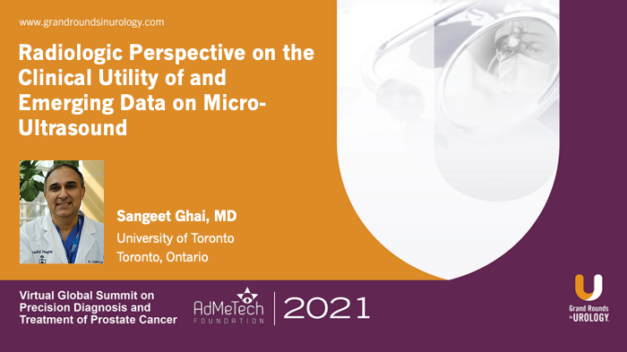Radiologic Perspective on the Clinical Utility of and Emerging Data on Micro-Ultrasound
In part 1 of a 2-part series on micro-ultrasound for prostate cancer imaging, Sangeet Ghai, MD, FRCR, Deputy Chief of Research and Associate Professor in the Joint Department of Medical Imaging (JDMI) at the University of Toronto in Ontario, Canada, considers micro-ultrasound and data evaluating its ability to produce better results than conventional imaging from a radiologic perspective. He explains that micro-ultrasound is a system that functions on a higher frequency than conventional options and uses the PRIMUS protocol, a prostate risk identification system similar to PIRADS. Dr. Ghai states that micro-ultrasound has been shown to increase detection rates by 12%, have sensitivity as high as 91%, and find cancer that was missed by MRI. He also discusses data comparing micro-ultrasound to other imaging modalities that shows that micro-ultrasound can find 1.05 times as much grade group 2 and higher disease as multiparametric MRI and has a 14.6% higher detection rate than robotic elastic fusion. Dr. Ghai concludes by reviewing data looking at micro-ultrasound visibility of MRI lesions and real-time targeting showing that 90% of MRI lesions were visible on micro-ultrasound and that 61% of those harbored clinically significant prostate cancer (csPCa) on targeted biopsy, that 43% of MRI lesions were retrospectively visible on TRUS and that 58% of those harbored csPCa, and that 24% of micro-ultrasound lesions with normal MRI were positive for csPCa.
Read More

